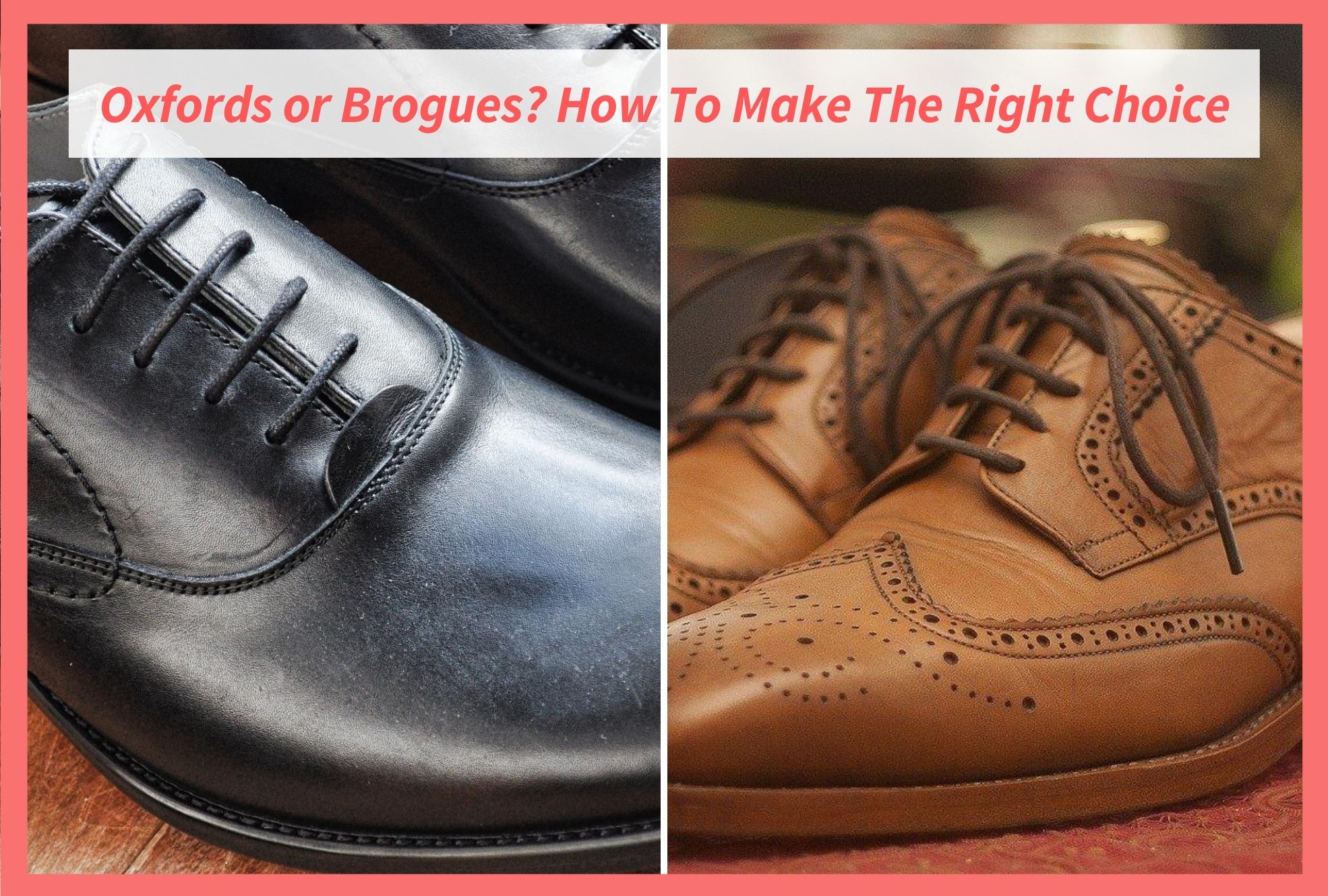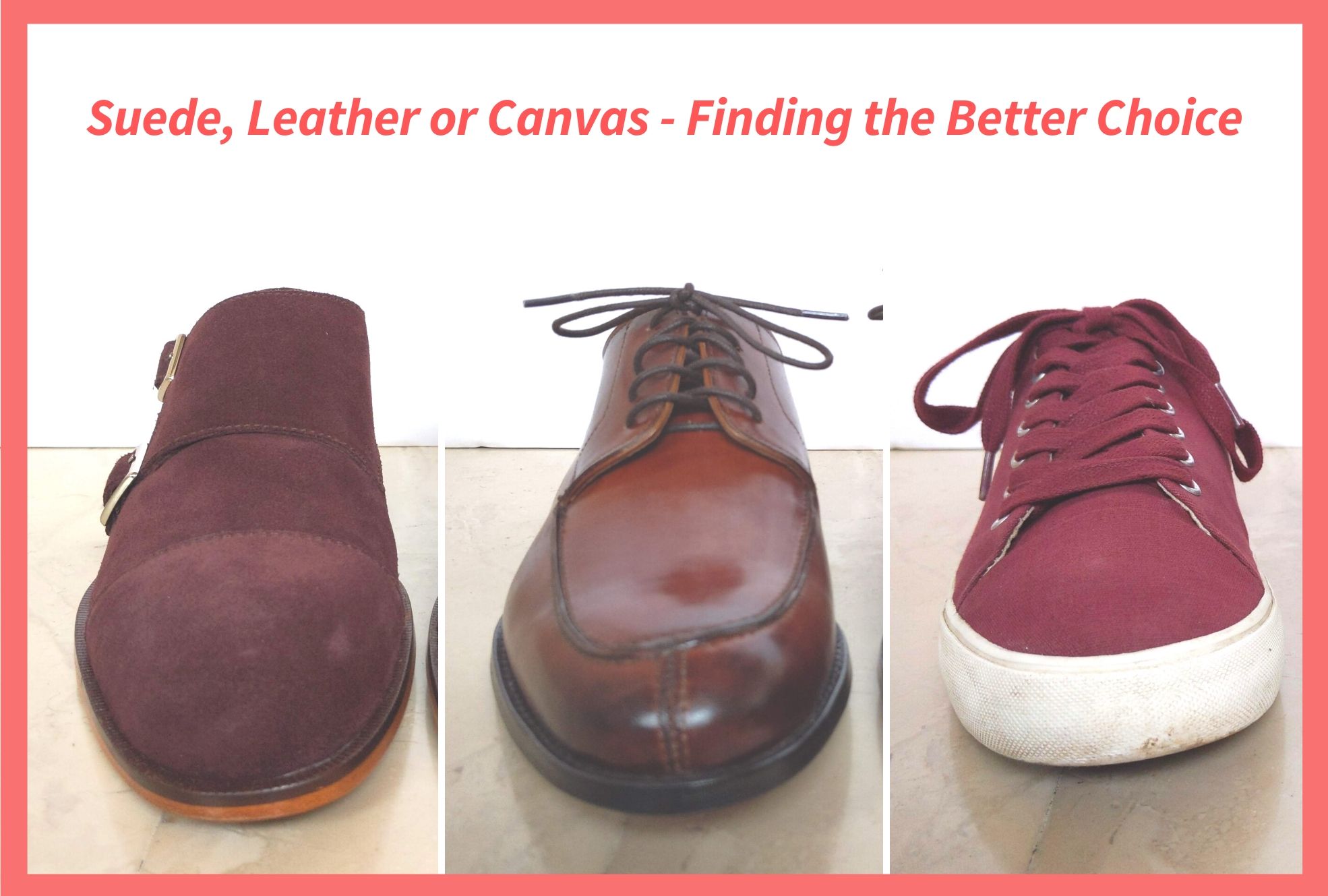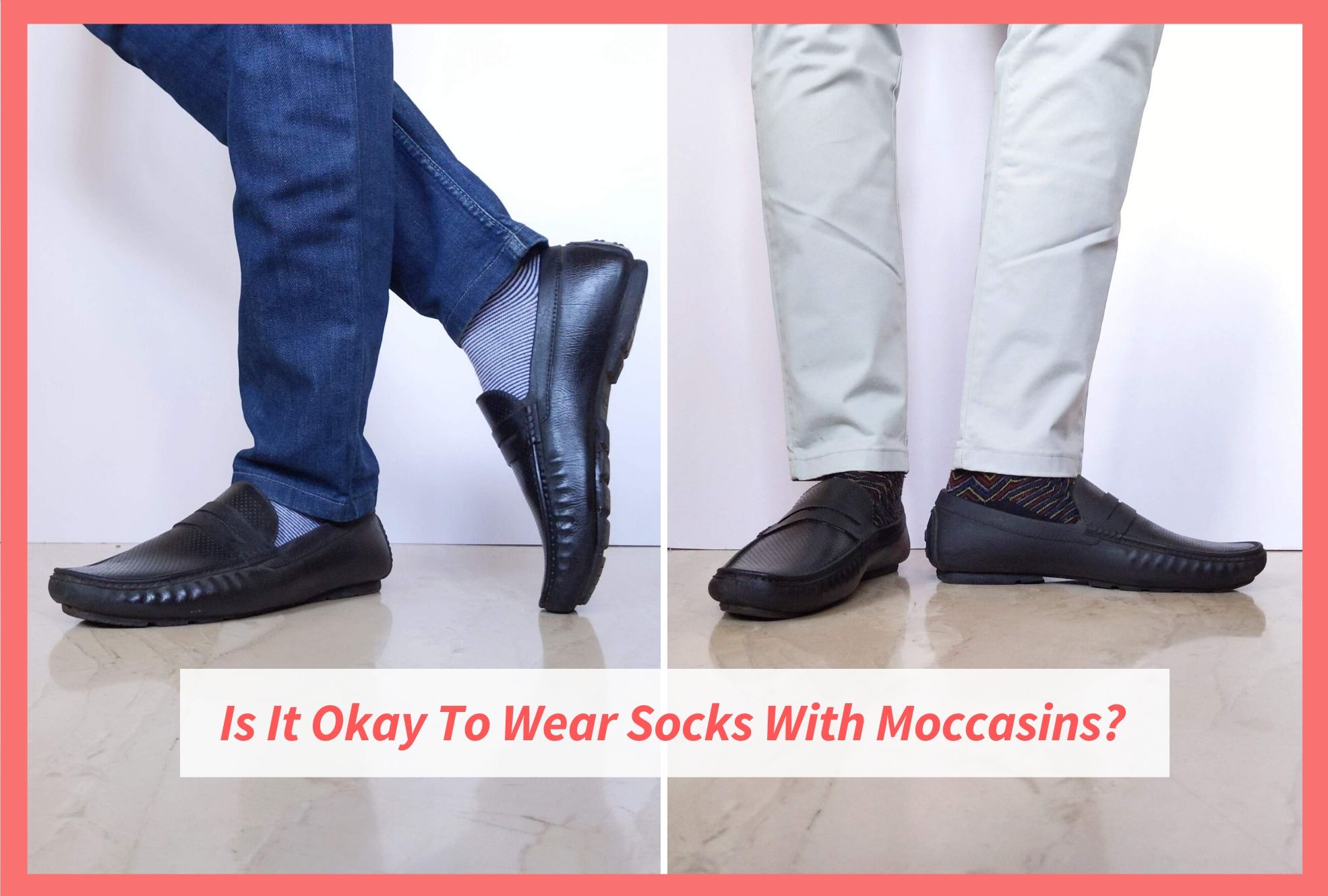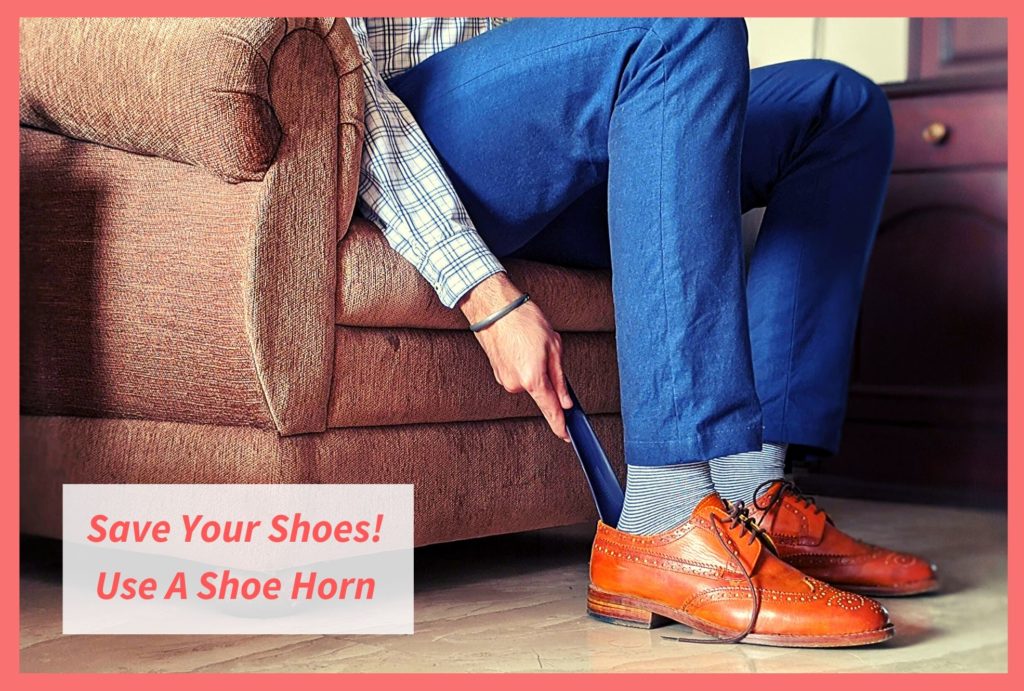
There are multiple things involved in shoe care – from shoe trees for proper storage of your dress shoes to regular polishing and cleaning to keep them healthy. The first step in shoe-care begins right when you put them on, though. Dress shoes (or even casual shoes and boots) that fit you perfectly will be snug, which makes it hard to put them on even with the laces completely undone. And although leather shoes conform to your foot over time, trying to push your feet into them with just your hands will put unnecessary pressure at the back of the shoe. This can damage the leather around the heel region of the shoe. Thankfully, there’s a tool to get around this – The Shoe Horn
A Shoe Horn is a long spoon-like tool that is used to put on your shoes safely by helping your foot slide into the shoe. Using it is very simple too. You need to hold it straight in the back of your shoe, the spoon-like head of the shoehorn facing downwards and inwards. After that, put your foot in the shoe – the heel will glide along the surface of the shoe horn. As the foot is going in, start pulling up on the shoe horn to remove it so that the remaining space allows your foot to safely fit into the shoe. Longer shoe horns can be used while standing up, while shorter shoe horns will require you to sit down to use them
In this article, we will discuss all the aspects of the shoehorn – such as their lengths and materials – and then describe how to use it in more detail. There are also some tips for those unfortunate times you might find yourself without a shoe-horn. Read on for more 🙂
Materials:
Shoe horns were originally made out of horn and glass, and later on shell, ivory and silver were used to appeal to people living more luxurious lifestyles. In fact, the use of horn in its making is what earned the shoe ‘horn’ its peculiar name. Today, they are most commonly available in wood, metal, and plastic – with horn still used by some shoe horn makers. The handles of the shoe horn have either a hole or a string loop for easy storage
1) Wood
The wooden shoehorn shares many benefits with other wooden items – durable and attractive. Wood finished shoehorns are a delight to hold, and good quality wood will have great looking grain that will pass on to the finished shoehorn
2) Metal
Metal shoe horns will generally come in stainless steel and are even better than their wooden counterparts in terms of durability. In daily use, metal shoe horns will always outlast wood and plastic ones. The smooth texture and finish of these shoe horns will make it easier to slide your feet into the shoes, even if you decide to go sockless.
The real downside to metal or stainless steel shoe horns is that they are heavy, which might make them unsuitable for some people. For this reason, I prefer to have metal shoe horns only in short travel size – which gives the premium feel with a weight lighter than long ones
3) Plastic
Plastic shoe horns are inexpensive, which make them a good choice if you want to buy multiple shoe horns to keep in your bags and drawers at home or work. As compared to wooden and metal shoe horns, these will be very light so they are easier to pack and carry.
However, plastic will crack and break if excessive force is applied. In my personal experience – I’ve broken the handles of two shoe horns while using them – both of them were plastic
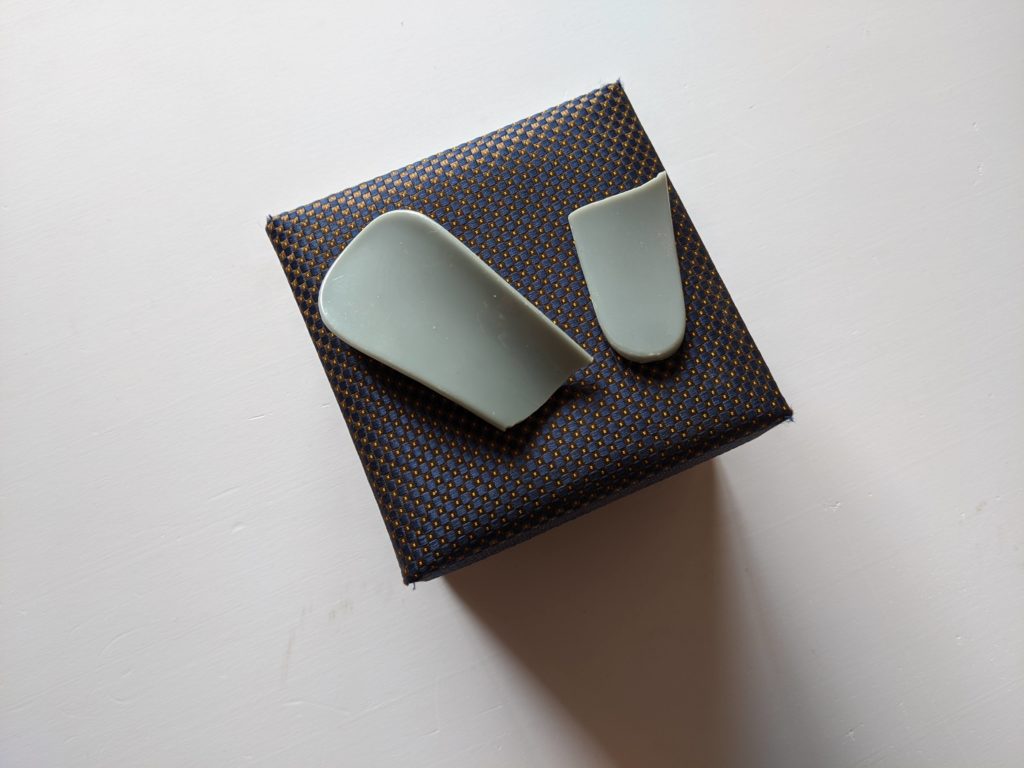
Lengths:
Shoe horns come in a variety of lengths based on how they are supposed to be used. Longer shoe horns will allow you to put on your shoes while standing up and shorter shoe horns require that you sit down to wear the shoes. What you choose depends on your convenience and preference
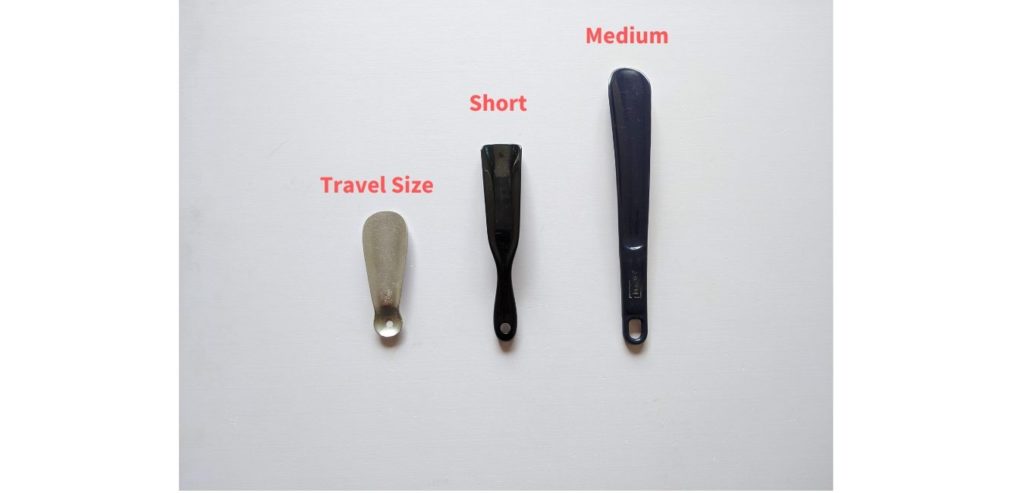
1) Short (5″ to 8″)
Smaller sizes are easier to transport, so shoe horns in this size category are very helpful while traveling. Those sold as ‘travel’ shoe horns will typically be 4″ to 5″ in length with a small scoop like handle to hold between your fingers. That does not mean that slightly longer shoe horns (7″ to 8″) are not fit for travel – they can be just as useful and versatile
For using these short shoe horns, you will have to sit down and bend over while putting on your shoes. Since it involves bending over, people with back problems should not go for short sizes and rather consider having longer shoe horns in their closet
2) Medium (10″ to 16″)
Medium shoe horns will still have you sitting down to use them, but you don’t need to bend over to put on your shoes. These lengths are the best options for those who find short shoe horns inconvenient but would still prefer to comfortably wear their shoes sitting down. You could count me in that category, as I find myself going back to my 12″ plastic shoehorn the most for daily usage. It isn’t the prettiest but gets the job done very well.
Shoe horns of this size are not travel friendly, but that does not been it is impossible to carry them along with you over long distances. Medium-sized plastic shoe horns will be light enough to pack in your luggage if you have the room to fit it.
3) Long (18″ to 24″)
These are the full-size shoe horns that allow you to put on shoes standing up. Such long shoe horns are suited for the most convenience – for people who do not want to bend or sit down while wearing shoes
How to Use a Shoe-Horn:
Now that we’ve discussed through the basics, let’s go through easy steps for using the shoe horn to safely put on your shoes
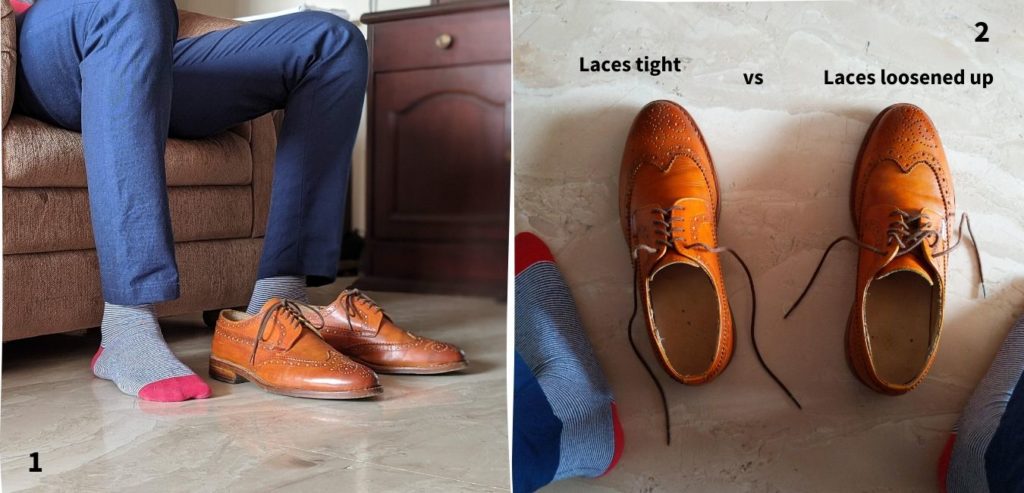
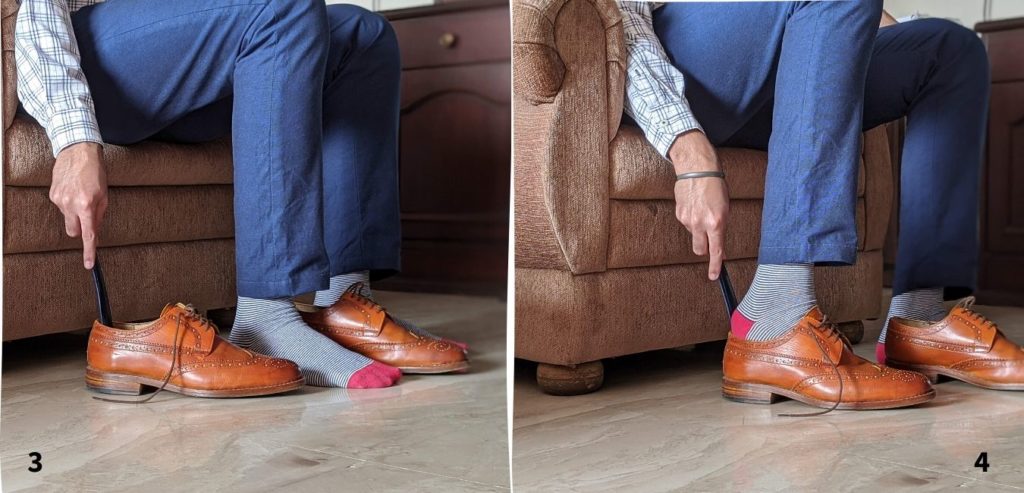
- Sit down on a chair/bed/stool if you have a short to medium shoe horn.
Stand up if you have a long shoe horn. - Loosen up the shoe laces. Trying to the wear shoes with the laces still tied is the worst mistake I see people doing. You need as much open space as possible in the shoe before you try to put your foot in
- Set the shoe horn vertically inside the shoe with the spoon-like curved side facing towards the front. The curves of the shoe horn should rest at the back of the shoe.
Inserting the shoe horn before your foot prevents the damage that can be caused from stepping on the back of the shoe - Slip your foot into the shoe. Your heel will slide along the surface of the shoe horn as your foot moves in. As this is happening, pull up on the shoe horn slowly. Your foot and the shoe horn are supposed to be moving in opposite directions, so that the shoe horn is completely out by the time your heel touches the sole of the shoe.
Alternatives:
It is good to keep shoe horns with you at places where you might need to take off and put on your shoes. But there’ll be times you find yourself without one – just like I did on a fine day at a friend’s wedding. A quick google search showed me various alternatives, and back in the comfort of my room I tried all of them to find out which works the best
1) Belt
The closest alternative to a long shoe horn, but you can’t use it standing up
2) Visiting Cards
Very convenient to use, depending on how hard or soft the card is. Decent alternative for a travel shoehorn
3) Folded Paper
This works just like a visiting card, depending on how small the piece of paper is. Multiple folds will make it sturdier to use, but also thicker – so using it on really snug shoes will be difficult
4) Handkerchief
Using a handkerchief as a shoehorn was a hit or miss for me. Sometimes I was easily able to slide my foot into the shoe, at other times I wasn’t. It also depends on the number of folds/fabric, but personally I wouldn’t consider a handkerchief as a good alternative to shoehorns. You’d be better off using the options above
Using a Shoe Horn with Boots:
Boots can be ankle length or even longer, which makes it especially tricky putting them on – your legs need to fit into them too along with the heels. Short shoe horns prove to be ineffective in this case – only medium or long shoe horns should be used with boots. So if you own boots and want a one-size-fits-all solution, medium-size shoe horns will be a good investment since they will work with everything you have
Using a shoe horn with boots involves the same steps as discussed above, but it becomes especially necessary to have the shoelaces completely loosened up.
- Ankle boots such as Chukkas should not prove fairly easy to put on with the laces undone all the way
- Chelsea Boots have no laces – but an elastic on the sides, pull on it to make some space for your foot and leg to slide in
- Most Boots higher than these two will have some way to open up the sides – most commonly a zipper. If so, open up the sides along with the laces and then follow the rest of the steps
Summary:
The shoe horn is an effective shoe care tool to put on your pair of shoes safely. While wood, metal, and plastic are the commonly used materials used for making shoe horns today, but they were originally made out of animal horn. This is why the shoe horn was named so.
All three materials have different textures, advantages and disadvantages. While wood and metal shoe horns will be sturdier and less prone to breakage than plastic, plastic shoe horns are cheaper which helps offset that disadvantage. Plastic is also more flexible than the other two variants, which makes it easier while putting on very stiff shoes. On the other hand – a nicely finished wooden shoe horn looks and feels better – and both will last longer than plastic
In terms of length – short, medium and long shoe horns all have their own use cases. Short ones are the most travel-friendly, while medium shoe horns allow you to sit down but not have to bend over to use them. And you can use full-size long shoe horns directly while standing up. Ultimately the choice of material and length depends on your preference
While using the shoe horn to safely put on your shoes, ensure that the laces are loosened up as much as possible. Also take care to pull up on the shoe horn as your fit slides in, so that you are not inserting it further into the shoe. And for situations you find yourself without a shoe horn but in need of one, ____ is a good alternative. The same steps apply 😉
Do you know of any other alternatives? Let me know in the comments!


